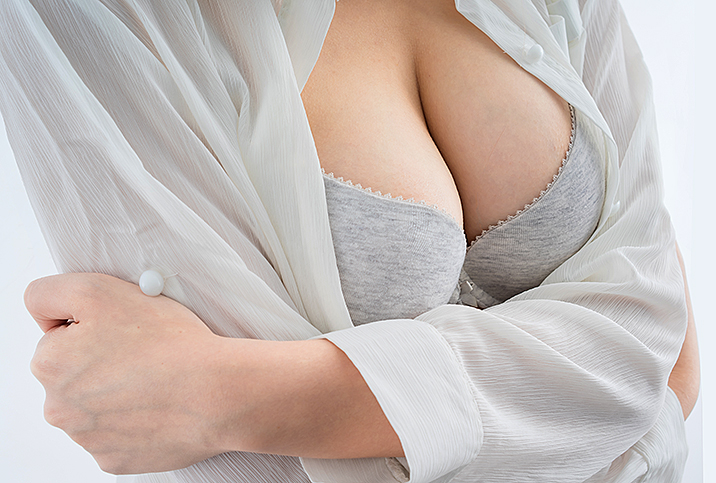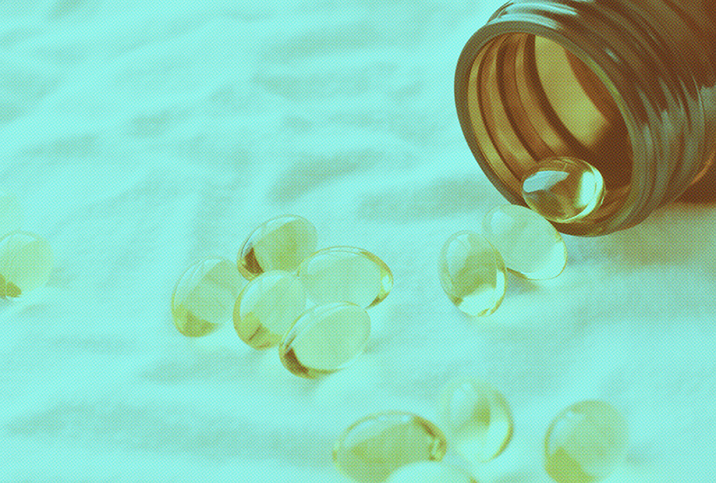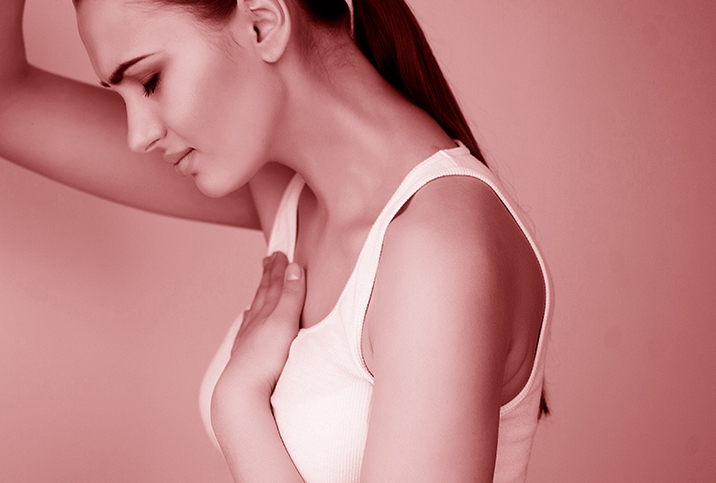Why Breast Pain Is Common for Menstruating People

Premenstrual breast pain, also called cyclical mastalgia, is an uncomfortable symptom many women experience. Research in Clinical Evidence, published by the British Medical Journal, indicates cyclical breast pain spontaneously resolves itself for 20 to 30 percent of women, but can recur in up to 60 percent of cases.
"Breast pain is often described as any discomfort, tenderness, throbbing or sharp stabbing pain in and around the breast tissue. Women of all ages can experience breast pain, and it can be constant or occur from time to time," explained Luke Powles, M.D., MRCGP, clinical director at Bupa Health Clinics.
Tracking any changes in your breast, whether pain or swelling, is a good way for you to discover a pattern and identify any cause for concern.
What causes breast pain?
Cyclical breast pain is a result of fluctuating hormones that take place in the week leading up to your period. The pain varies from mild to severe, with some women experiencing a dull ache and others feeling a sharp pain alongside swelling.
"In this phase we see progesterone levels peak midway and then decline, as well as a more gentle rise and fall of estrogen," said Dana Bruck, L.Ac, MSTCM and Co-Founder of Ova Moon.
Fluctuations in hormones can affect the milk ducts or milk glands, causing the breasts to become lumpy.
Many women report their breasts feel larger or heavier during PMS. According to Powles, fluctuations in hormones can affect the milk ducts or milk glands, causing the breasts to become lumpy. These lumps, also known as fibrocystic breasts, are very common and can be painful.
Breast pain can recur every month for some women, or it can appear occasionally. There is no singular cause for breast pain, nor is there a clear method to prevent it from returning. However, there are certain factors that can increase the likelihood of breast pain, including lack of exercise, smoking, poor diet and stress.
How do you know if it's cyclical?
Cyclical pain is commonly associated with other hormonal changes in the body. Along with breast pain and swelling, you might notice bloating, mood swings, tiredness and headaches. You should keep note of any symptoms and exactly when they occur, as this can help you to identify the root cause.
"Aside from PMS and hormonal changes, there are other causes of breast pain," said Laura Purdy, M.D., medical director at hellowisp.com. "Thankfully, most of the causes of breast pain are completely benign. But there are some things to look out for. There are several types of benign tumors, such as fibroadenoma, or breast cysts, that can also change in size and cause pain with the cycles."
If the pain or swelling is due to PMS, these symptoms should disappear a few days into your period, when your hormones begin to settle. However, if the pain or discomfort continues after your period or occurs at random times throughout the month, this might be cause for concern. Similarly, pain or swelling that occurs in one breast is not typically caused by fluctuating hormones and should always be investigated.
How to reduce breast pain
While it's not possible to prevent PMS and breast pain, there are ways you can reduce swelling and tenderness, which can have a positive impact on your mood and wellbeing.
"For women who have pain surrounding their cycle, birth control of various types can be used to allow for more stabilization of the hormones in order to prevent the breast or the lesion inside of the breast from having such a drastic change during the cycle," Purdy said.
Other women find the most relief when they don't wear a bra, especially if their breasts are swollen or tender.
Dietary and lifestyle changes, such as eating more fiber-rich foods, increasing your level of exercise, and practicing yoga can all help to stabilize your hormones and reduce breast pain.
Making sure you are comfortable and well-rested in the days leading up to your period can help to reduce some of the most unpleasant symptoms. Wearing a well-fitted bra that provides the right level of support can lessen breast pain. Other women find the most relief when they don't wear a bra, especially if their breasts are swollen or tender.
"Many people with breast pain have been found to have lower progesterone levels, which can point to issues with ovulation or the corpus luteum," Bruck concluded. "Support healthy progesterone levels by making sure you are eating foods that detoxify excess estrogen from the body and by having a more anti-inflammatory diet."


















